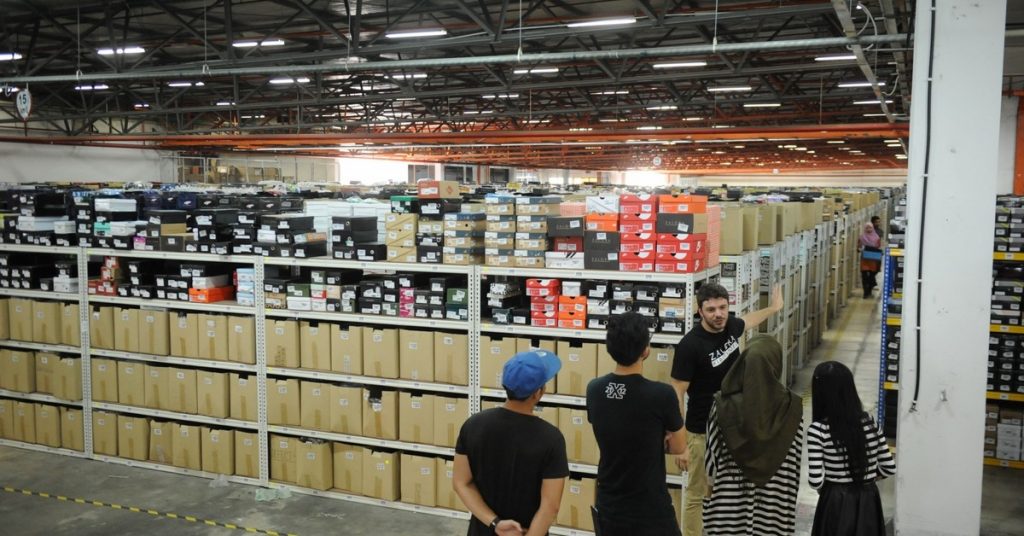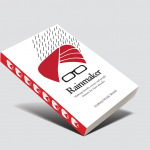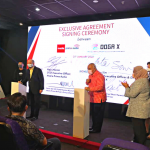
In a sprawling 470,000 sq. ft. warehouse approximately 45 minutes on the outskirts of Kuala Lumpur, the capital of Malaysia, Zalora workers are busy consolidating stock pools that have been sent in by brands across the Asia Pacific ahead of the busy festive season.
The warehouse, which combines human and automation and cost US$4m to build, is the fashion e-commerce platform’s regional e-fulfilment centre and serves Zalora’s seven markets in APAC, including neighbouring Singapore.
Having a hybrid human and tech-enabled warehouse means when big shopping festivals like Singles’ Day, Black Friday and Cyber Monday roll around, it helps Zalora cope with the sudden spike in orders.
While Rostin Javadi, the chief operations officer of Zalora was unwilling to share any figures on the orders Zalora receives during the big shopping festivals, he claims the platform process up to 10 times orders on an average day.
He says for Singles’ Day in 2018, Zalora’s fulfilment hub ran for 24/7 non-stop, with a total of 1,000 pickers who picked one item per second.
“Shoppers around the world will be anticipating and participating in these festivals; as a leading fashion e-commerce player, we stand ready to ensure our customers receive the best shopping experience as well,” he explains as workers pick, pack and ship items to Zalora’s customers.
“Every year, festivals like Singles’ Day, 12.12 and other mega e-commerce days are becoming bigger, increasing in the size and scale. That presents quite a major logistical challenge. So the first step is getting the orders out of the warehouse on time. But the next piece is even more complex piece and that’s the last-mile delivery.”
He adds: “Last-mile delivery providers, including Zalora, have our own fleet and have been preparing and doing the planning to see how they can scale up to manage that demand. Managing customer expectations during the mega peak days are very important because I think even customers are not expecting that they’re going to get their delivery instantaneously on these really huge mega peak days.”
Zalora is planning to build similar, but bigger fulfilment centres in Philippines and Indonesia, as the geography of those countries warrants their standalone alone centres. It will follow the blueprint of the current centre in Malaysia.
“From a performance standpoint it is important for us to have, especially in the markets like Philippines and Indonesia, where there’s a higher cost of tax and duties and higher barriers to entry in terms of the stock perspective for us, to have a local fulfillment solution for the local stock,” explains Javadi.
Javadi claims Zalora’s efficiency has gone up because it is shipping out more items, which means it has reduced its warehouse lead time. Now, he says express orders take only between one to three hours, while for normal orders, it takes only between four and five hours to fulfill on average.
“That is including the fact that we are not working over the night. So it’s actually a very fast process,” he explains.
“When we centralise the stock, we improve the delivery promise for customers because we use a higher level of automation.”
“It seems like a lot of processes when you go through and see it, but actually, from a speed standpoint, the time in which the order comes in, to the time in which we pick, pack and eventually ship the order is actually pretty fast.”
The key reason for the increased efficiency is down to two key logistics and operations systems that Zalora has developed in-house to ensure that humans and technology can work hand in hand
The first one is mobile picking, a customised solution that transmits picking information of customer orders through mobile devices, allowing greater scalability and on-time fulfilment.
Zalora claims that since its introduction, picking productivity increased significantly and accuracy is now at 100%, due to the real-time item verification.
The second solution is the Order Management System (OMS), which was developed for the Zalora’s operations team to track movements of inventory into and out of its distribution centres, process orders, manage customer returns and refunds and manage Zalora’s own delivery fleet, allowing for orders to be processed in real-time.
Javadi, who is also a co-founder of Zalora and has spent seven and a half years at the platform, recalls the days when Zalora was trying to use off-the-shelf solutions when it came to the warehouse management but found the solutions were not tailored for the platform.
He says while it was very evident the tech was very fast, it was not the right setup as the tech was not scalable and not efficient for Zalora’s processes. That is why Zalora decided to invest in developing its tech in-house.
“For every single task, there is a lot of technology involved, but we have designed the processes are to be very much integrated into how our staff work. So although there’s a manual process for picking, the picking process is designed around the user itself,” explains Javadi.
“We’ve done actually a lot of work on the UX side to make sure that the process is actually, so let’s call it almost user-friendly and intuitive, that we can bring in new workers and within one to two hours actually they can learn the process. So I think that’s the main differentiation I can see.”
According to Javadi, the pivotal moment when Zalora decided it was time to develop its proprietary mobile picking and OMS was in 2012, when it produced its first TVC campaign together with Malaysia-based designer Jovian to launch a ready-to-wear collection with a Malaysian celebrity.
He says Zalora saw a huge peak in orders and realised that its existing system was not capable of dealing with the drastic increase in volumes. That meant that it was time to switch to a more scalable approach.
“In the world of warehousing and supply chain, scalability equals sustainability. We have thought through every process in the fulfillment center to be scalable,” Javadi explains.
“The infrastructure and layout were thought through even before we moved in as we did not want our operations to be impacted. We started with one block first, before expanding six months after. We also have the option to add two more blocks to double our capacity.”
“Our processes are built for scale if you look at the stations for inbound, outbound and returns they are exactly identical and modular. We can add more as the business grows.”
He adds: “For the OMS app which runs on an Android app, we rolled it out in 2015 and as the tech is built for scale, it allows us to easily add users and grow on this web-based platform.”
MARKETING Magazine is not responsible for the content of external sites.









